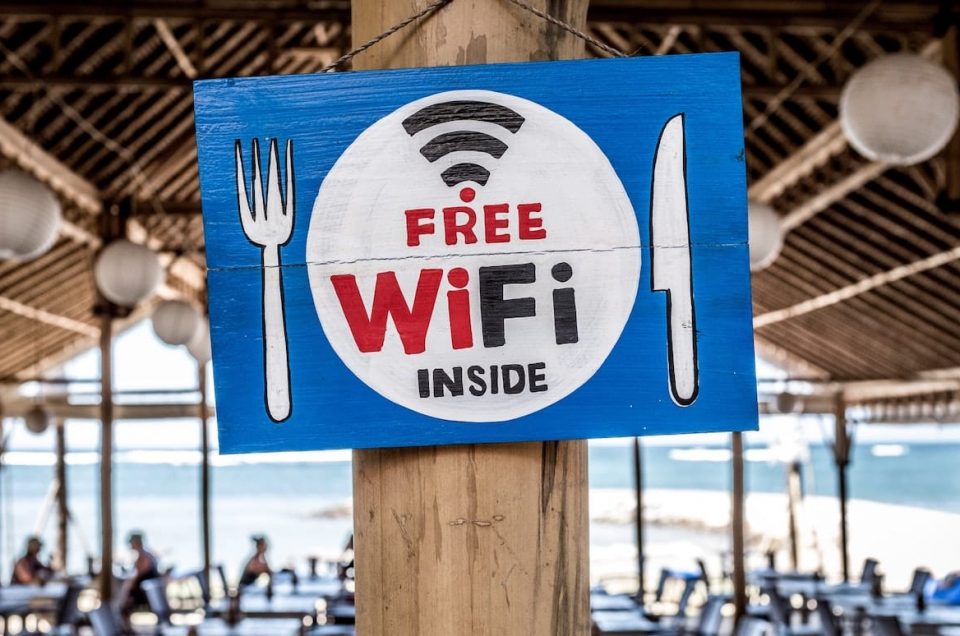For digital nomads and anyone else who travels for work, a fast and reliable Internet connection is often top of the list when it comes to deciding which countries to visit. Well, we’ve got some good news for you. Wi-Fi is getter faster! That’s right, we’re moving on from Wi-Fi 5, and Wi-Fi 6 is soon to be launched.
If you have no idea what I’m talking about, then don’t worry. This is a brand-new way of categorising Wi-Fi networks that we’ll explain in the rest of this blog post.

New Wi-Fi 6 router
What is Wi-Fi 6?
You might have noticed a set of numbers and letters in the specs of your Wi-Fi network, starting with 802.11. But you’d easily be forgiven if you haven’t. These codes look overly technical and aren’t particularly useful for the average internet user. But they have been changing occasionally over the last couple of decades without most of us noticing. From 802.11b in 1999 to 802.11ac since 2014, our Wi-Fi networks have slowly been evolving.
To make these versions easier to understand, the Wi-Fi alliance has rebranded them in simpler terms:
- Wi-Fi 1 – 802.11b, released in 1999.
- Wi-Fi 2 – 802.11a, also released in 1999.
- Wi-Fi 3 – 802.11g, released in 2003.
- Wi-Fi 4 – 802.11n, released in 2009.
- Wi-Fi 5 – 802.11ac, released in 2014.
- Wi-Fi 6 – 802.11ax, scheduled for release in 2019.
So, devices are currently using Wi-Fi 4 or 5, and Wi-Fi 6 will be rolled out across routers and devices soon. In fact, the Samsung Galaxy S10 already supports Wi-Fi 6 and is the first smartphone to do so.

Wi-Fi 6 will speed up your network
How has it improved?
So, what makes Wi-Fi 6 so much better than Wi-Fi 5? As you might hope, it’s faster! Early reports suggest that it’s up to 40% faster than previous networks. The way that updated routers deliver wireless signals to devices will also improve performance in crowded areas where multiple devices are competing for signals. So, if you’re on a busy train or at a large sporting event, you won’t be stuck with slow speeds as everyone tries to access the Wi-Fi at once.
A new feature called target wake time will stop Wi-Fi 6 from rapidly draining your device’s battery life. This feature conserves power by signalling to the device’s Wi-Fi radio when it can go into sleep mode. Overall, Wi-Fi 6 is simply faster and more efficient than all of its predecessors.
How to prepare for Wi-Fi 6
The first thing you might want to do is check your home router to see which of the above versions it specifies. If your router is old or you frequently have problems with slow Wi-Fi, then you might want to upgrade to a Wi-Fi 6 certified router once they become widely available. Many devices will now display a sticker to state that they are Wi-Fi 6 certified.
But a fancy new router won’t make a difference unless you also have a compatible Wi-Fi 6 device. As well as the Galaxy S10, the new iPhone 11 will also support Wi-Fi 6, and most future smartphones, laptops, and other devices will follow suit. New routers will still work with older devices, but they won’t speed them up beyond the version that the device supports.
If you’re looking for fast and reliable Wi-Fi wherever you are, then add the Sapphire T2 from TravelWifi to your travel checklist. This portable wireless hotspot is available for use on up to five devices.





